A pulled hamstring (or hamstring strains) is an extremely common injury in athletes with many things that can cause them. Hamstring injuries make up approximately 32% of all muscle strains in runners. The hamstring muscle is complex because it crosses not only at the knee but at the hip making it a two-joint muscle. What a hamstring muscle is capable of doing depends on the position of the hip and knee.
What is a Pulled Hamstring?
A pulled hamstring is when the capability of the muscle is exceeded by the load placed upon it. This means that the hamstring muscle gets overloaded or overstretched resulting in damage to the muscle. The damage can be minor with mild tenderness to a hamstring tear.
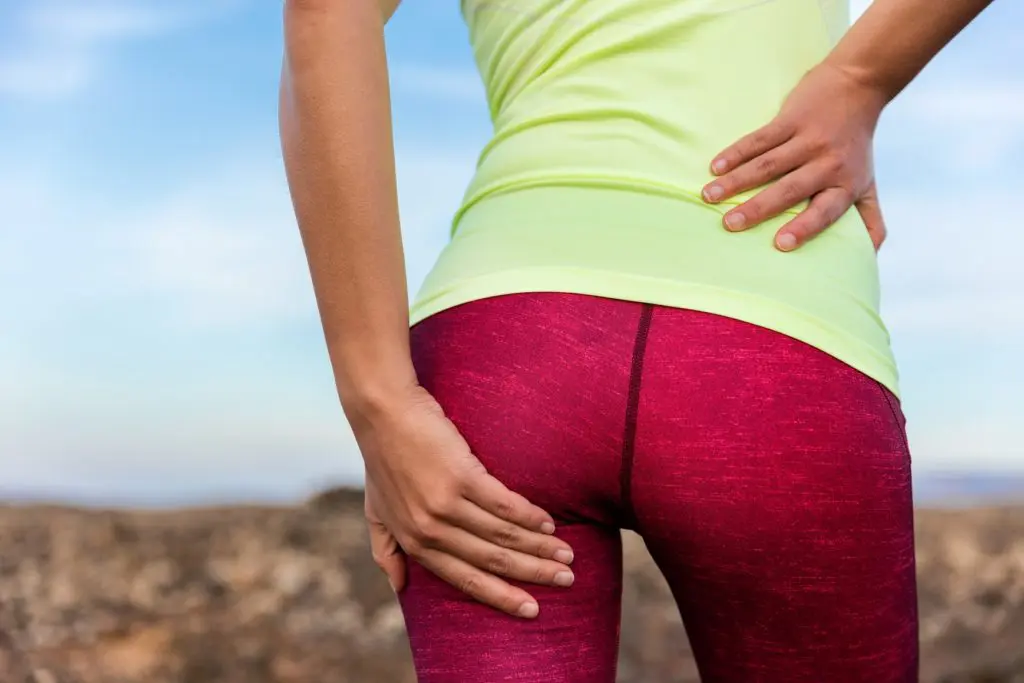
Pulled Hamstring Symptoms
In general, pulled hamstrings tend to be painful and cause issues standing or walking immediately after injury. People describe it as being tight or feeling like a cramp or a knot. Pain is usually right at the site of injury but it can also feel like it radiates up or down the thigh. In mild cases, a person might not feel it until they cool down. Occasionally people will hear a pop or a tear when it is injured. Bruising can occur on the back of the hamstring and it can hurt to fully flex the knee.
What else could it be?
- Sciatica
- Posterior Thigh Compartment Syndrome
- Piriformis Syndrome
- Scar Tissue From Previous Tears
- Pubic Symphysitis
- Myofascial Trigger Points
What Causes a Pulled Hamstring?
The following things are established factors related to pulled hamstrings.
- Poor Hamstring Flexibility
- Strength Imbalance Between Right and Left Hamstring Muscles
- Strength Imbalance Between the Quadriceps and Hamstring
- Trauma or Collisions
- Previous Injury
- Weakness in the Hamstring
- Weakness in the Gluteus Maximus Muscle
- Sacroiliac Joint Dysfunction
- Leg Length Inequality
- Electrolyte Depletion
Improper warm-ups and poor training are also linked to hamstring strains. One factor regarding reinjury concerns the idea that hamstrings muscles are often overly tight after injury and may not be fully rehabbed before training is resumed.

How to Treat a Pulled Hamstring?
There are multiple stages of healing and treatment needs to align with the stage that you are in. Right after an injury in the acute stage, you need to focus on protecting the area. Note that protection does not necessitate complete rest. The old adage was RICE for Rest, Ice, Compression and Elevation, but that is considered old advice now. While I am not opposed to using ice or cold after an injury, it is not usually something to stick with long term. Cold packs should be used for maybe 24-48 hours after an injury.
One of many new acronyms is MEAT: Movement, Exercise, Analgesia and Treatment. Movement is a key thing in decreasing pain and speeding healing, but careful on pushing things too far, too fast. Small amounts of stress on tissue helps it to heal right. Exercise is once the pain decreases and the ability to move increases. Always move and exercise with a small tolerance for having pain. Runners are great at pushing through pain but need to be overly patient during recovery or you will end up right back where you started.
Analgesia is all about reducing pain using natural pain relief and reducing inflammation using ginger, turmeric, magnesium, capsaicin, valerian root and boswellia. This is also where ice can be used. Over-the-counter pain medications (NSAIDs) are often suggested as a treatment for muscle strains however, studies have shown that NSAIDs decrease pain while impeding healing of the muscle (regeneration of muscle tissue). This means that the person is willing to move the muscle earlier than they should, so they do not protect it while making it take longer to recover.
Certain treatments can be done on yourself (if you know what you are doing) and others will be done by a healthcare provider. Self-myofascial release can be done using a foam roller , Theracane, lacrosse ball, and a percussion massager like a Hypervolt. Or even the vibrating foam roller like a Vyper 2.0)
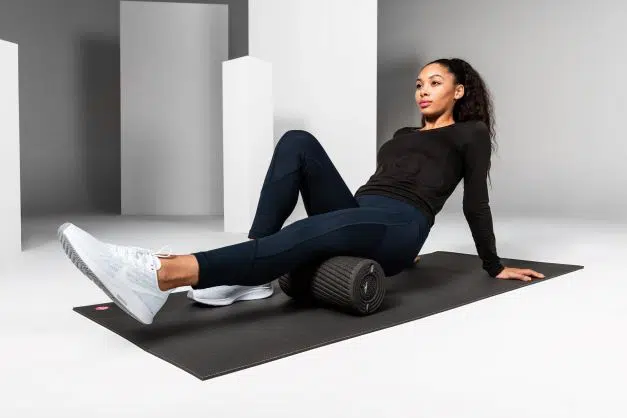
The reason to use a healthcare provider like a Certified Chiropractic Sports Physician or a skilled PT is the ability to assess your problem to find the proper path to getting you better. Self-diagnosis is often flawed since Doctor Google won’t ask you the right questions. Which of the previously mentioned causes is what you have? Massage therapists are also great to visit but do not have the training or scope of practice to really assess what is wrong with you. Something like a Selective Functional Movement Assessment (SFMA) may be exactly what you need.
Advanced treatments may be required for your speedy recovery. The initial stages of recovery from a pulled hamstring may require using Kinesio Tape to drain any bruising, support the muscle and decrease pain. Properly kinesiotaping a hamstring can allow a person to walk with minimal pain while avoiding a limp. Cold laser therapy is another treatment that can speed recovery by reducing pain and inflammation and improving muscle healing. Chiropractic adjustments can help because it has been shown that manipulation of problematic sacroiliac joints in athletes with a pulled hamstring leads to increased strength in the involved hamstring.
Graston Technique is able to address myofascial adhesions quickly in pulled hamstrings. GT fosters faster rehabilitation and recovery leading to improved function due to reducing the formation of scar tissue associated with the injury
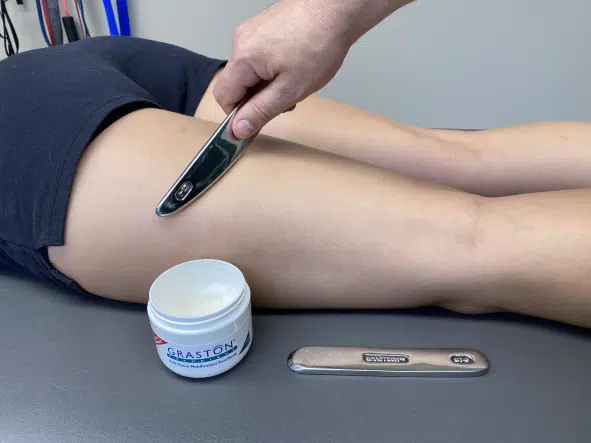
Proper rehabilitation is one of the most crucial aspects of recovering from a pulled hamstring and preventing reinjury. Athletes must be taught the proper corrective exercises to strengthen the injured muscles and the weakened muscles that likely were part of the problem in the first place. It is very common for both the hamstring and the glute to be weak when people injure the proximal hamstring. The glute has the tendency to weak in many people (especially runners) and its lack of output stresses the hamstring. If the hamstring is too weak, it may get overloaded and fail, resulting in a pulled hamstring. Be sure to check out my blog for more information on glute amnesia and glute exercises.

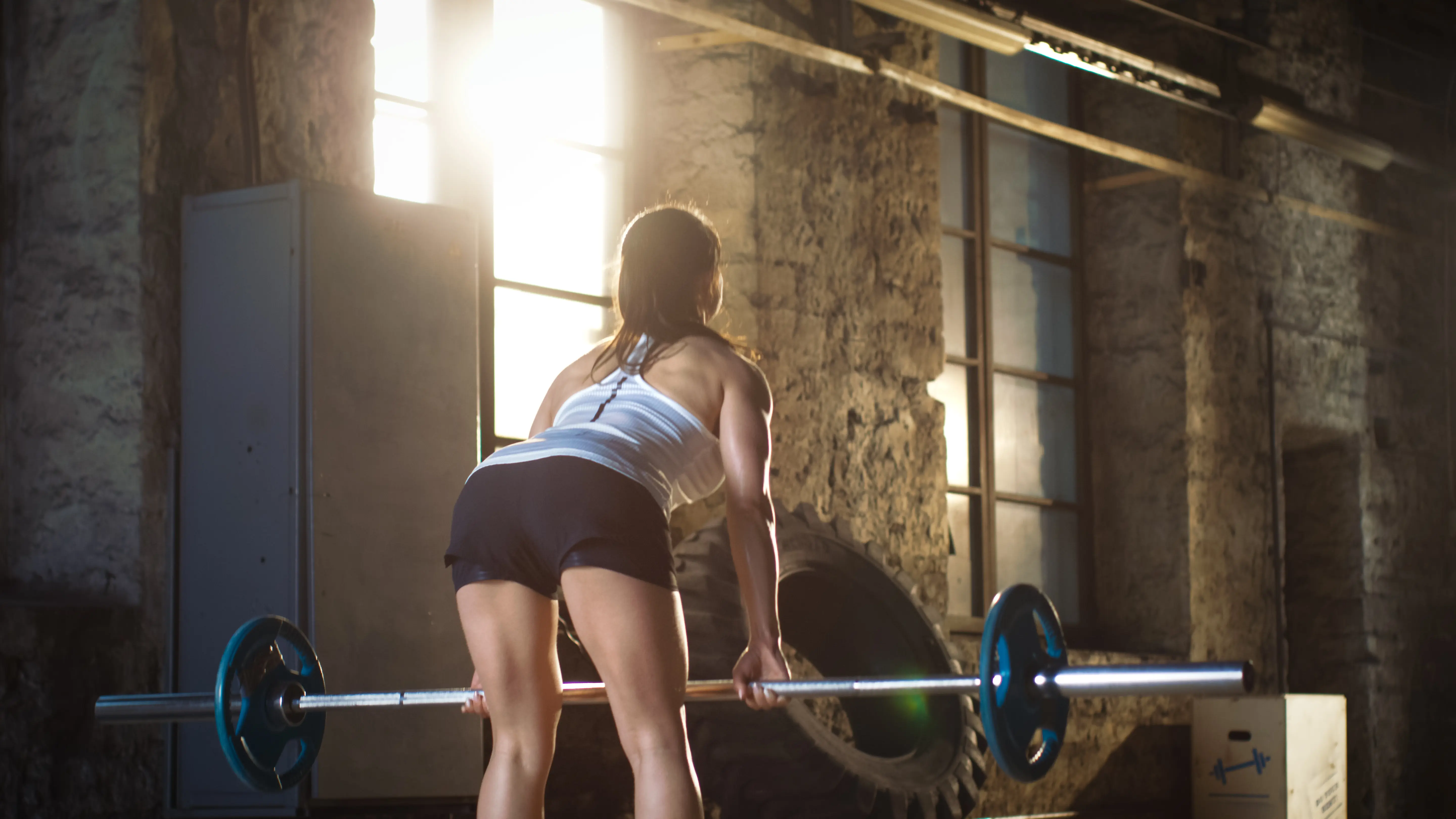
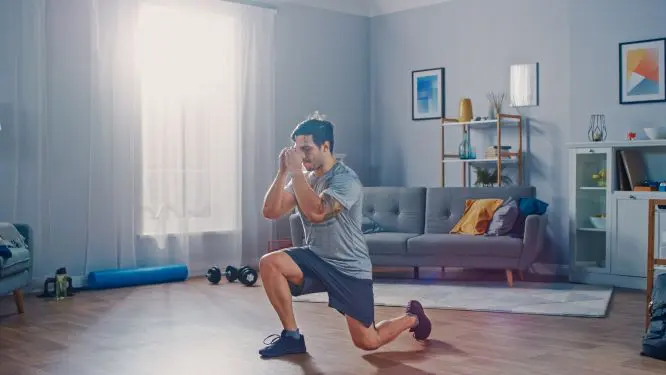
What is the Recovery Time for a Pulled Hamstring?
The recovery time for a pulled hamstring depends on the severity of the injury. Extremely mild hamstring strains may heal in a couple days to a week. More severe injuries may take over a month to heal.
Can a Pulled Hamstring Cause Bruising?
Some of the worst bruising that I’ve seen on a person is after pulling a hamstring. Bruising can extend the entire length of the back of the thigh and down into the calf. I have used Kinesio Taping to successfully treat bruising while drastically reducing pain in days.
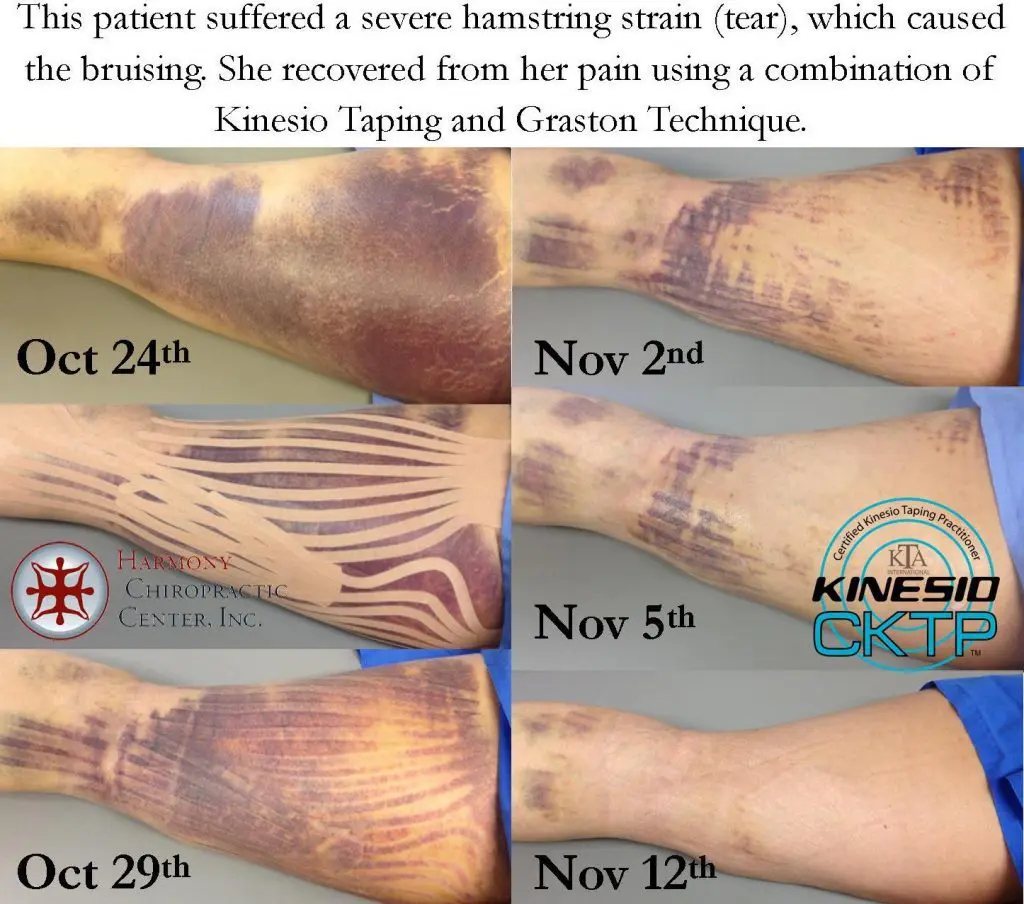
How to Stretch a Pulled Hamstring?
You don’t. At least not right away despite the fact that it often feels tight. And when you do start trying to move it you do not want to really stretch it. The reason to avoid strenuous stretches is that a muscle strain causes damage and micro-tearing to the muscle fibers and a good stretch also causes micro-tearing of the muscle. General movement is good at first and then eventually gentle pain-free stretching.
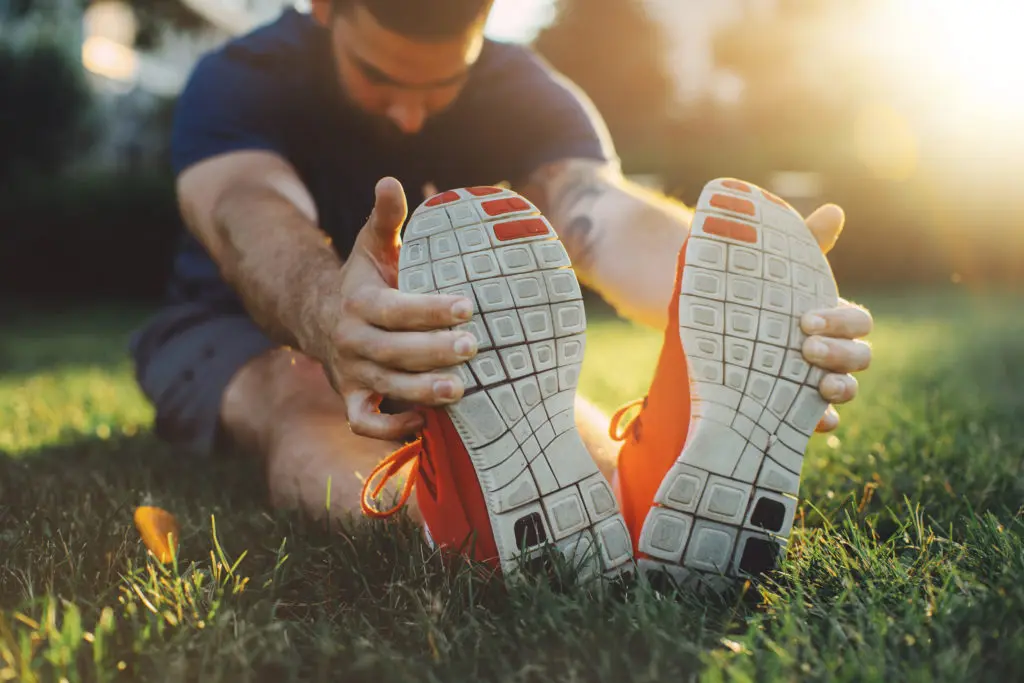
Is having tight hamstrings always a bad thing?
No. It is noted that long-distance runners that have tighter hamstrings tend to be more economical in their running style. This means that they store some of the energy of the hip flexion in the hamstring and can transfer it back in order to propel themselves forward. It is noted that lengthening hamstrings does not improve running in elite runners. It is noted that there is always a balance when it comes to life versus sport. Limitations on your flexibility and your life are acceptable if you are an elite athlete that relies on that tension to perform. We all need to be flexible enough to be able to live a normal life, but it is noted that runners do not need to be able to kick people in the head. But many of these people are unable to bend forward properly and will likely hurt something else eventually.
